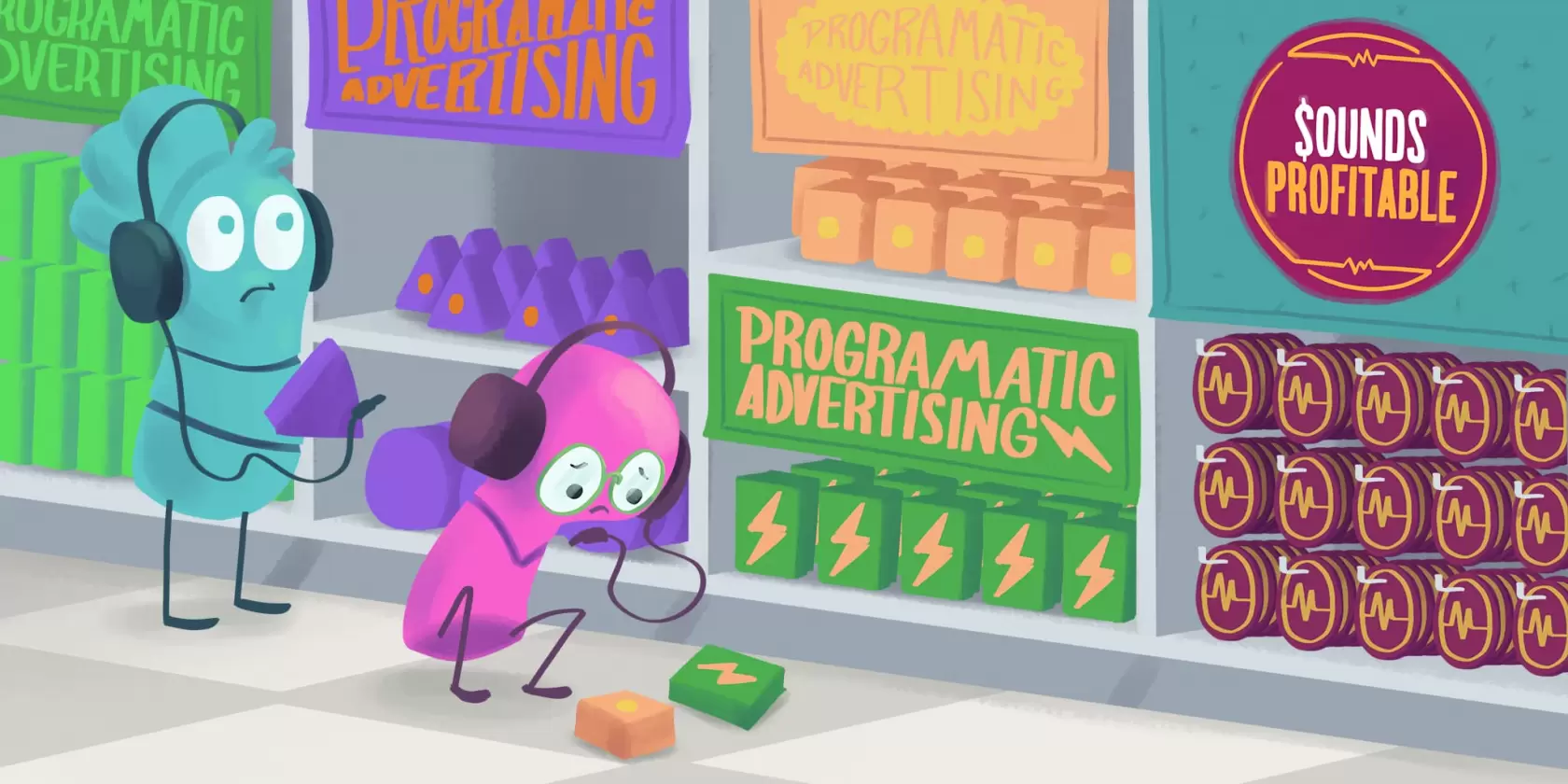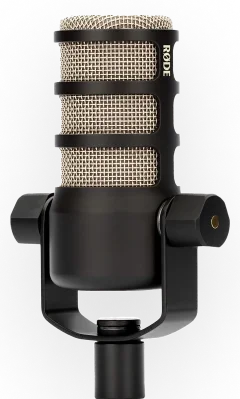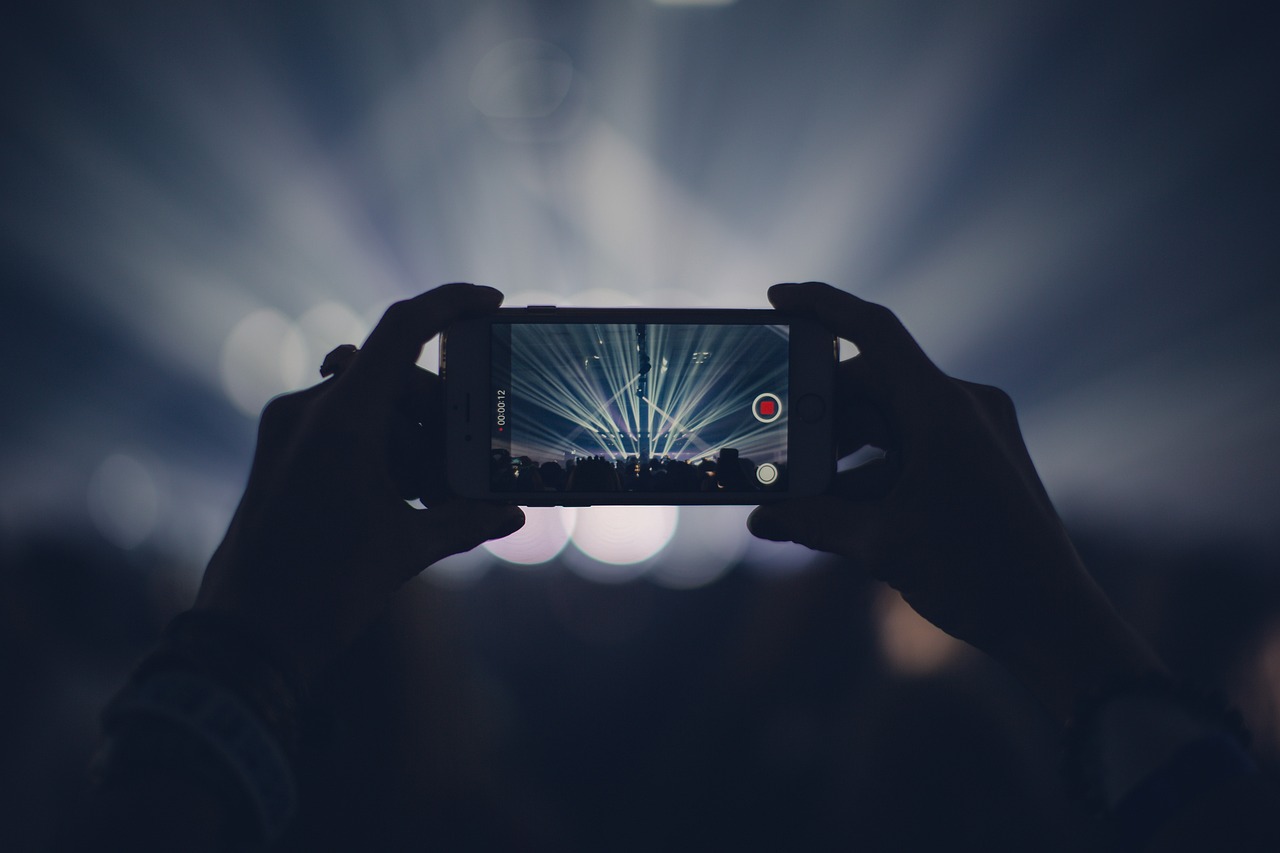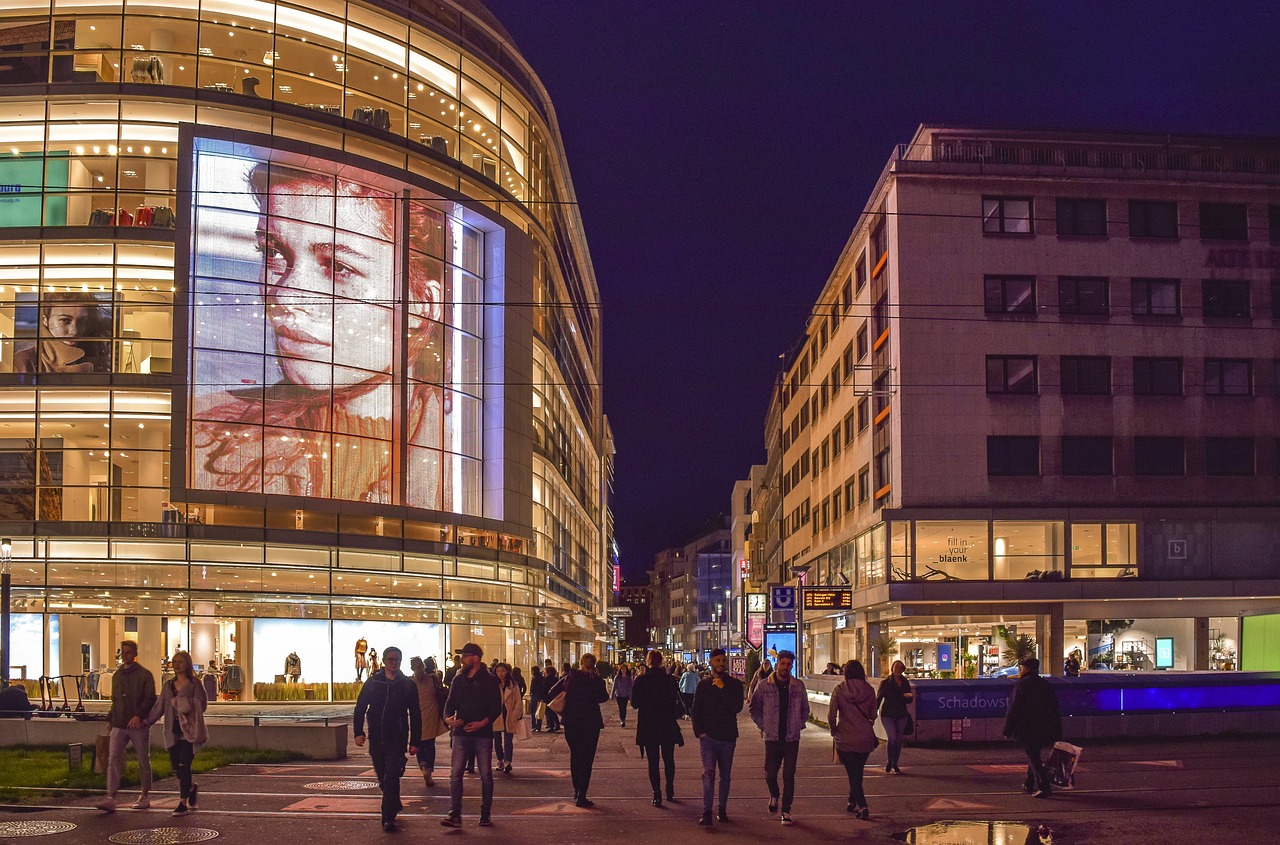Host-read vs announcer-read. Baked-in vs Faked in. Direct sell vs programmatic. The podcasting space has had endless debates about the relative merits of the various types of ads, but what do listeners think? Sounds Profitable gets to the bottom of this debate in its latest research study, After These Messages, available for free.
Over the past few months, we’ve covered a lot about programmatic advertising in podcasting. We touched on why you should consider podcast programmatic advertising and then dove right into how publishers can set up their podcasts for programmatic.
Now that we’ve given publishers a reason to explore programmatic, and the tools to set it up themselves, it’s time to dedicate our focus to the buyers: the ones making all of this possible by bringing their ad budgets into podcasting. We’ve made massive strides in growing the podcast industry so far by asking buyers to, well, buy into how we do things.
I think it’s now time that we buy into how buyers do things, to entice more of them to make podcasting a major staple of their ad spend, and blow those industry growth projections out of the water.
What is Programmatic Buying
We use the word programmatic wrong quite a bit in the podcasting space, so let’s simplify it as best we can: programmatic requires the use of supply-side platforms (SSP) and demand-side platforms (DSP) to enable the purchasing of ad inventory.
While dynamic ad insertion (DAI) is a requirement for a podcast to be accessible programmatically, they are not interchangeable, just as host-read advertising and baked-in advertising are not the same thing.
Buyers utilize a DSP to configure their campaign fully. There are many major DSP’s out there, like The Trade Desk and Basis, that work across multiple advertising channels, including audio and specifically podcasting. And there are audio and podcast-focused DSP’s like AdsWizz and AudioHook that are specifically built to cater to an audio-first audience.
When I say configure their campaign fully, I really mean it. The buyer now has the ability to set all of their targeting, upload the creative assets they want, select all the third-party tracking partners they wish to work with, and quite a bit more. And while providing that service to buyers when they buy outside of programmatic is seen as a service, it actually prevents a buyer from having a full view of their entire campaign.
Many buyers in other advertising channels utilize an adserver or DSP even when not buying programmatically, providing publishers with a javascript or VAST tag instead of the creative assets to make sure they still maintain that control.
Benefits of Programmatic Buying
Programmatic adservers are built with the decades of experience learned from other advertising channels, applied to podcasting. This allows buyers to take advantage of features that are still not incredibly common in podcasting, but are borderline table stakes for large buyers. So let’s explore some of them.
Frequency Capping
Imagine setting up one campaign, targeting multiple publishers and inventory sources, and being able to define that in a 30-day period, and a unique user (as defined by IP address + user agent) can only hear your ad for a set number of impressions each month? You could even set daily or weekly caps to prevent accidentally front loading all the ads in one day if the listener is on a binge. And even more impressive is that this persists throughout your entire campaign, not just isolated per publisher that chooses to implement it.
Nuanced Targeting
Most targeting in podcasting today is provided by the publishers adserver, meaning that they’re locked into using specific vendors and beholden to both the price of that vendor and the markup that the hosting platform charges. But in programmatic, as the DSP is the tool of the buyer, the DSP is motivated to integrate more data partners and to enable buyers to bring in their own first party data.
This ranges from geographic, to behavioral, demographic, and basically anything that can eventually be tied to an IP address. And best of all, if the targeting doesn’t match, the buyer can just skip that impression.
Creative Execution
Want the listener to experience a different ad read for each subsequent impression, regardless of the podcast they’re listening to? Or maybe you want to dynamically build a creative execution based on the show category, geography of the listener, and the weather at time of download? Or, maybe you need to run an A/B test for the campaign without the same listener hearing both ads. Partners like Adthos and Frequency enable all of these solutions through serving a VAST ad through DAI and programmatic, and some of these features are also offered directly from the DSP’s.
And don’t forget, someone needs to do the ad read. Whether that’s each host in a 100 podcast ad buy, 10 producers reading for 10 shows each, or two announcers spread across 50 shows each, programmatic can enable all of these executions across your entire campaign.
Selective Execution
Programmatic buying is an offer to bid on available inventory. Targeting doesn’t match what you were looking for? Skip it. Show category not what you’re optimizing for? Skip it. Buyers aren’t committed to all the inventory sent their way, only the inventory they want to purchase. Though only purchasing what you deem the highest quality inventory is a great way to drain your ad budget while negatively narrowing your targeting pool.
Types of Programmatic Deals
While it still feels like programmatic advertising is very new in podcasting, there is a large amount of podcast inventory available programmatically today. So let’s break it down by the entity that represents the inventory.
Publisher Direct
Buying direct requires both a buyer and publisher to connect, agree to terms, and for the publisher to give the buyer access to their inventory. Publishers hosted on Omny Studio and Simplecast can directly connect their inventory to Triton Digital and Adswizz respectively, through the connections built between their hosting company and the SSP. Publishers hosted on ART 19 and Megaphone can use a VAST tag provided by either SSP to make their inventory available as well.
By directly connecting with a publisher, a buyer can receive access to open inventory (available to any buyer), private marketplaces (curated inventory to appeal to specific buyers), or programmatic direct (set priced inventory that can either be allocated specifically for a buyer to purchase all of it or still enable buyer decisioning).
Always On
Both SSP’s and DSP’s, having the inventory run through their platforms, are able to create bundles of inventory that are readily available for both sides. Publishers can opt in if the category and price work for them. Buyers can purchase the inventory at pre-negotiated prices without initiating any conversation. For example, Triton Digital provides this type of curated deals on the SSP side, while Basis does similar on the DSP side.
Inventory Rep
Publishers create a programmatic deal with inventory rep partners, like Adswizz’s Podwave, Audiology by Katz, Adtonos, or TargetSpot, enabling them to represent their inventory (exclusive or not) to the buyers they work with. By having access to a wide variety of inventory they can create bespoke deals for buyers specific to their interest, easily acquire additional inventory to expand the buy, and be flexible on where their inventory comes from.
Hosted Rep
On a programmatic level, this is no different for a buyer other than what limits the inventory source: the publisher must be hosted on their platform. Partners like Acast, Audioboom, Blubrry, Libsyn, and Spreaker by iHeart all sell their opted-in publishers inventory programmatically either through their own SSP or by utilizing Adswizz or Triton Digital. The seller does have additional insights into the publisher’s analytics, including their direct sales and download numbers, that enable different optimization opportunities.
Masquerading as Programmatic
There are several platforms out there that use the words Programmatic or Marketplace, but can’t be transacted on from a buyer’s DSP. Regardless of the cool unique features that they offer or unique inventory available, calling it programmatic only confuses people further.
Spotify Ad Network is the primary offender in this category. While they are clearly exploring programmatic, the current offering is a fully managed internal solution and not accessible through one of the models defined above.
Wrapping it up
There will always be a place for all types of podcast advertising. In fact, the publishers who consistently drive success for their advertisers will be the ones to drive new formats forward and really push what the medium is capable of. Podcast advertising only exists because of that truth, and the buyers aren’t abandoning us anytime soon.
But podcasting also needs more structure. We need to play ball a bit with digital advertising overall, especially as we’re such a major part of not only the audio ecosystem but overall media consumption. We need to show greater advertising that we’re not just a test budget, and that the media we run for them can be ingested and compared to their other campaigns in their overall plan. Programmatic is the pathway to do that.
Rockie Thomas of SoundStack made a staggering point last week in the Sounds Profitable partner’s Slack channel: The CTV Programmatic Guidelines are incredibly well put-together for an area of advertising that is less than half as old as podcast advertising. We don’t need to reinvent the wheel on everything, sometimes it’s great to just be the best wheel.
In our latest episode of Sounds Profitable: Adtech Applied, Bryan Barletta is joined by Stew Redwine in observing the anniversary of the first audio advertisement in 1922. How have things changed over a hundred years? What even was the first ad?
New Sponsors
Sounds Profitable exists thanks to the continued support of our amazing sponsors. Monthly consulting, free tickets to our quarterly events, sponsor-only webinars, and access to our 500+ person Slack channel are all benefits of sponsoring Sounds Profitable.
- Optimal Living Daily is a podcast network with over 300M downloads since 2015, where we hand-pick and read you the best content on personal development, finance, health, business, and more with author permission
- Amplified Audio focuses on amplifying the voices of unique and niche creators that aren’t a part of the majority of audio networks and categories
Want to learn more about sponsorship? Hit reply or send us an email!
Market Insights with Magellan AI
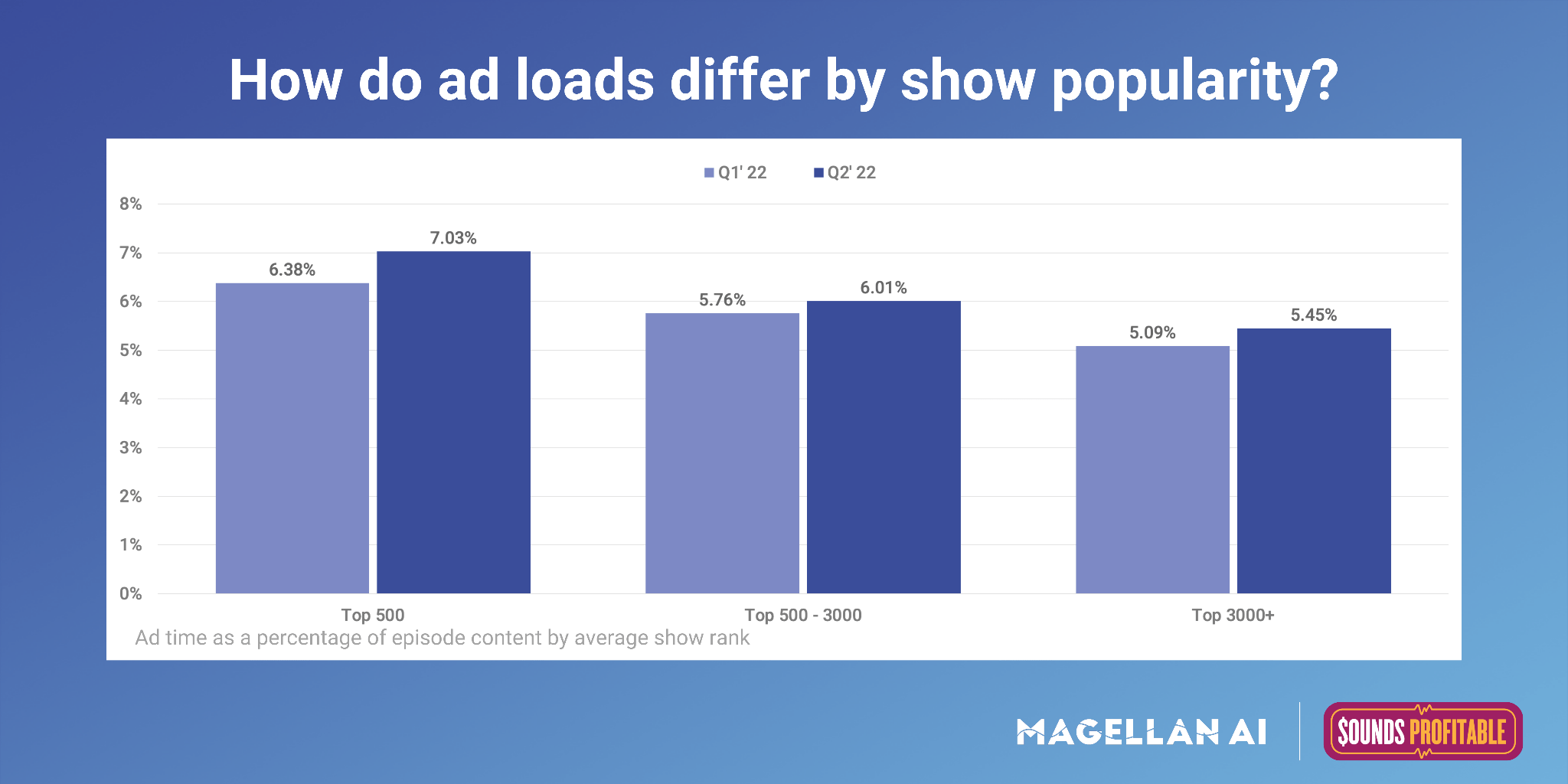
This week we broke out how ad loads differ by show popularity. To accomplish this we calculated the average Apple Rank of shows for the first 6 months of 2022 and bucketed them into three groups: Top 500, Top 501 – 3000, and Top 3000+.
We found that average ad loads ticked up across all groups between Q1’22 and Q2’22. The largest increase occurred in the Top 500 shows where ad loads increased by 0.65%. Also notable is how ad loads differ between groups. Unsurprisingly ad loads are highest in the Top 500 group at over 7% in Q2, while ad loads were closer to 5.5% in the Top 3000+ group.
Interested in more insights like this? Download the Q2’22 Podcast Advertising Benchmark Report for a full analysis
Anatomy of an Ad with ThoughtLeaders

Sponsoring brand: Organifi
Where we caught the ad: Over It and On With It
Who else has sponsored this podcast? Mind Doc App, Cured, Storyworth, Third Love
Where else has this brand appeared? Real Moms of Bravo, The Life Stylist, Food Heals, The Ultimate Health Podcast
Why it works: This podcast, hosted by Christine Hassler, gives you practical tools and spiritual principles to help you overcome any obstacle you may be dealing with. So, partnering with Organifi – a plant-based superfood blend that enriches your body with micronutrients and helps keep your body healthy – is quite seamless. While dealing with ongoing hardships, taking care of your body may be pushed to the side.

